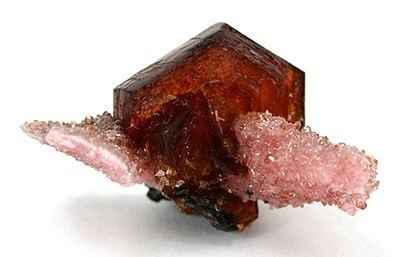Category Sulfate mineral Dana classification 31.1.2.1 | Strunz classification 7.DD.35 Crystal system Trigonal | |
 | ||
Formula(repeating unit) NaAl3(Mn)6(SO4)2(OH)18·12H2O Crystal class Rhombohedral (3)H-M symbol: (3) | ||
Shigaite is a mineral with formula NaAl3(Mn2+)6(SO4)2(OH)18·12H2O that typically occurs as small, hexagonal crystals or thin coatings. It is named for Shiga Prefecture, Japan, where it was discovered in 1985. The formula was significantly revised in 1996, identifying sodium as a previously unknown constituent.
Contents
Description
Shigaite occurs as hexagonal tabular crystals up to 2 cm (0.79 in) in size or as thin films and coatings. The mineral can be yellow, burnt orange, brown or black in color. Shigaite occurs in metamorphosed deposits of manganese ore and is the Mn2+ analogue of motukoreaite.
Structure
Shigaite consists of oxycation sheets of [AlMn2+2(OH)6]1+ intercalated with oxyanion sheets of [Na(H2O)6{H2O}6(SO4)2]3−. Linkage between the sheets and within the oxyanion sheet results largely through hydrogen bonding.
History
Shigaite was discovered in 1985 in the Ioi Mine, Shiga Prefecture, Japan. The original study, published in the journal Neues Jahrbuch für Mineralogie, Monatshefte, identified the formula as Al4Mn7(SO4)2(OH)22·8H2O. The formula was significantly revised in 1996 using a sample from the N'Chwaning Mine, South Africa. Sodium, discovered to be a component of shigaite, was not identified in the original study. However, an unidentified volatile had been noted that presumably was a sodium-containing complex.
Distribution
As of 2012, shigaite is known from the following sites:
The type material is housed in the National Museum of Natural History in Washington, D.C. as sample 122089.
Association
Shigaite has been found associated with the following minerals:
